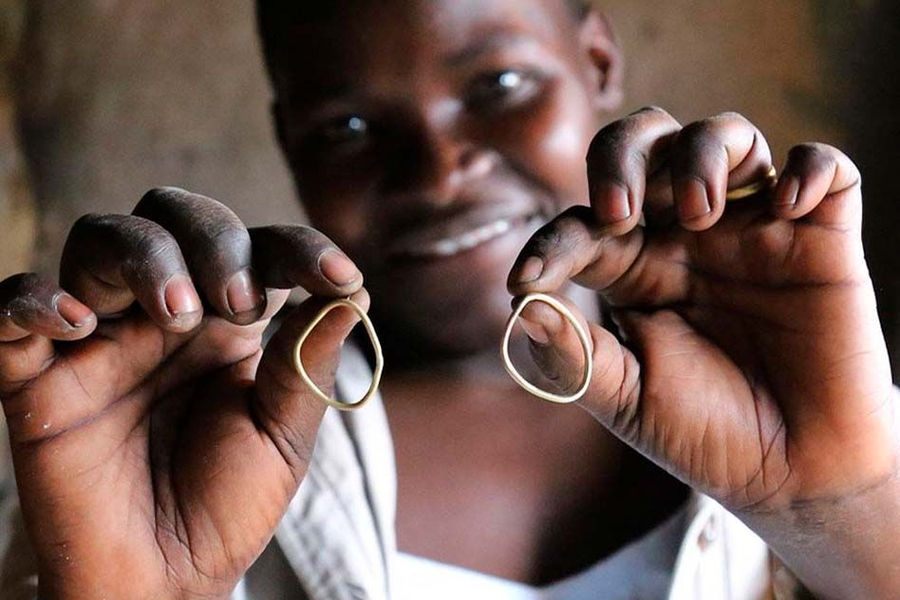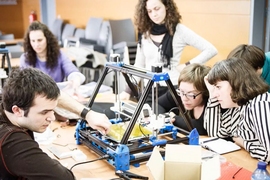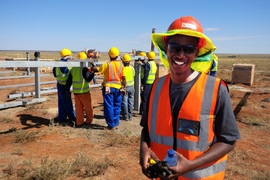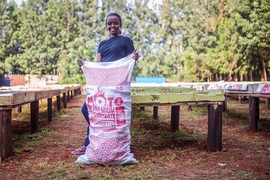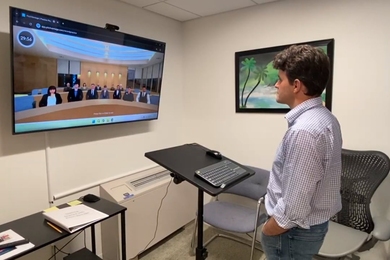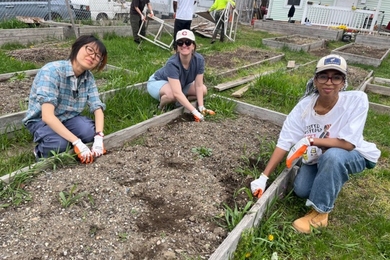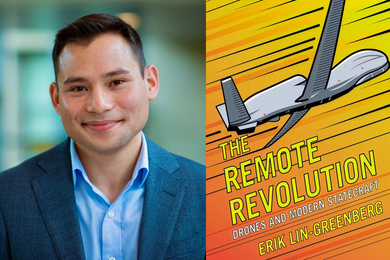Soko has established a distinct brand for itself in the hypercompetitive fashion world by selling jewelry and accessories handcrafted by local artisans in Nairobi, Kenya. A good brand means very little, however, without a profitable way to make products and get them to consumers, and that’s where the company’s innovation really stands out.
While most new companies must find a way to fit into existing supply chains, Soko built its own where none existed. The result is a mobile-based network the company uses to coordinate large order fulfillments across a distributed network of artisan groups around Nairobi. The system is demand-responsive, meaning artisans only make products that have already been ordered. It also runs at a fraction of the cost of traditional production models in the fashion industry, helping artisans compete on the international stage.
“We started out choosing to work in this really challenging context where infrastructure is limited, yet the community is mobile-enabled,” says Soko co-founder Ella Peinovich MA ’12. “We chose to develop a solution that allows us to work with artisans in their own workshops on their own terms rather than as employees working from a central factory. We built what we call a ‘virtual factory’ developing a virtual resource planning (VRP) solution that reduced friction in the supply chain while cutting out the costly middlemen.”
Soko’s system begins by matching product orders with the right artisans using a machine-learning system built on metrics including reputation and performance. Artisans can then manage inventory, arrange for deliveries, and get paid directly through their mobile phones. The company’s field workers also use the mobile-to-web solution to track and quality-check production.
The savings reaped by the system’s efficiencies are then passed on to Soko’s current network of 2,500 artisans, who collect 25 to 35 percent of the revenue from the final sales of their products compared to the 2 to 3 percent industry standard. The average artisan is able to boost their income fivefold in a matter of months working with Soko.
“Our model is built on the idea of more dignified living,” Peinovich says. “We use technology not to displace human capital with mass manufacturing and automation, but to better leverage available capacity and organize skills to meet this market. Ultimately, that’s meant sustainable, scalable, and dignified work for thousands.”
Bringing a new world to fashion
When Peinovich first started travelling to Nairobi in 2010, she would always come back with one more suitcase than she left with. Working with a separate MIT spinoff at the time, she quickly took a liking to the products sold by local artisans, buying suitcases worth of their work and selling the pieces at her family’s art gallery in her home state of Wisconsin.
She learned the products had selling power, but she also realized there was no sustainable way for these artisans to compete in the international market. Peinovich was still thinking about the problem when she went back to Nairobi in 2011 to conduct research for her master’s thesis on localized design to manufacturing. The University of Nairobi is part of MIT’s Center for Bits and Atoms’ Fab Lab program, which seeks to increase access to tools for invention and digital fabrication in regions around the world, and Peinovich was looking at how the lab influenced the local maker community.
“Through that work, I was interacting with these artisan communities and recognizing the skill and talent, but also seeing that it was a pretty economically distressed community,” Peinovich says. “In talking to the local artisans, I found it was a dangerous line of work; without access to the international market, they had to sell their goods in open air markets. They were dealing in a lot of cash transactions, making them vulnerable to assault. It’s also exhausting, with no proper toilets, or shade, or water provided. They were producing beautiful products, yet the system for selling the products was ugly. I was determined to develop a system as beautiful as their product.”
While working at the Fab Lab, Peinovich met Catherine Mahugu, who was studying computer science at the university at the time, and pitched her on the early idea for Soko. Gwendolyn Floyd got a similar pitch, and the three co-founders began working on the concept of Soko in their spare time after Peinovich and Floyd traveled back to Cambridge.
In 2012, Soko was part of the first group of companies to go through the delta v startup accelerator program run by the Martin Trust Center for MIT Entrepreneurship. The company also participated in the MIT Solve Inclusive Innovation Challenge. Peinovich received seed grants from the Priscilla King Gray Public Service Center and MIT’s Legatum Center for Development and Entrepreneurship. Immediately after earning her degree, she used the first grants to buy a laptop and a plane ticket, and moved to Nairobi to work on Soko full-time.
The co-founders have been building a system to align the efforts of the local artisan community with trends in the fashion world ever since.
“Our model enables work for all different types of artisans by leveraging the available natural resources and talent,” Peinovich says. “In Kenya this includes the use of up-sourced horns and bones, wire, and cast brass. We utilize a component-based manufacturing and assembly model. Within a single design, you may find there are elements from three different workshops that worked separately to contribute to a product. A horn workshop may produce a pendant, a hook is produced by another, and the finished assembly is brought together at Soko’s central workshop.”
Another part of the company’s mission is bringing more sustainability to fashion. Artisans purchase all of Soko’s horn and bone products from local butchers, who provide them as a byproduct of the meat processing industry.
All this means consumers can buy any of Soko’s products knowing they’ve been made ethically and sustainably. Soko sells items directly to consumers through its website, but most of the company’s sales are through partnerships with retailers including Nordstrom, Reformation, and Free People.
Peinovich says it took roughly three years to prove to retailers that Soko could generate demand among an increasingly discerning and principled consumer base in fashion. That point was driven home with former first lady Michelle Obama’s recent decision to wear Soko’s jewelry on the cover of the December issue of Essence magazine, which came as a total surprise to the founders.
“Michelle’s stylist Meredith Koop found Soko, and she chose products that represented the former first lady,” Peinovich says. “Female empowerment and having a driving message is something that we as a brand really represent and align to.”
Soko is expecting to do $6.5 million in sales in 2019. Looking forward, Peinovich believes the power of their mobile manufacturing model will enable the company to work with a larger array of products, across broader geographic and industry sectors.
Soko’s success translates to increased wages for thousands of artisans, but the full impact of the company, Peinovich says, extends beyond the money.
“When [artisans] see their product on the former first lady of the United States, they feel a part of something significant,” Peinovich says. “That represents them as much as our brand. As independent entrepreneurs, [they are] not only competing but thriving in the international market. The artisans understand that every minute they spend on orders is building something for themselves and their community, and that community expands around the world with each new product.”
